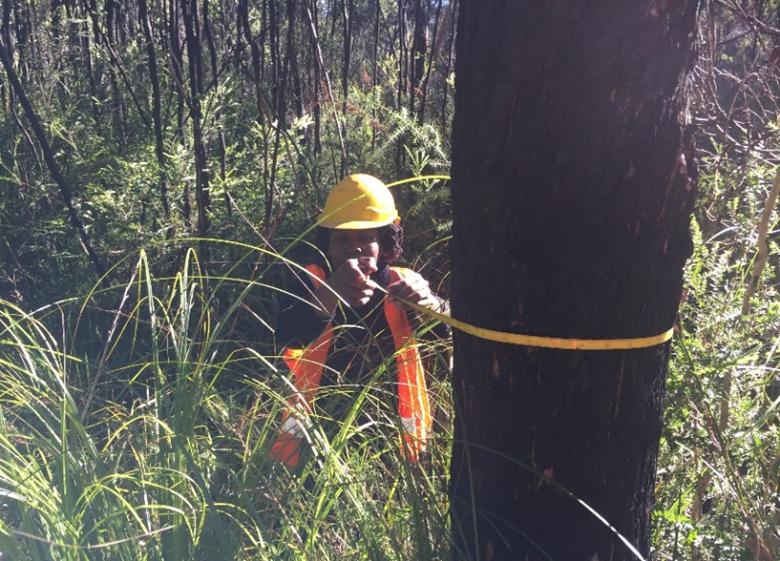Mercy Ndalila
Other projects
This research seeks to advance the understanding of wildfire regimes in Kenya, as wildfires have become an important ecological disturbance across several ecosystems in the country. Anecdotal evidence suggests an increase in the frequency and extent of wildfires in Kenyan ecosystems over the past two decades. This increase, along with a rise in severe fires in fire-prone regions worldwide attest to a likely human-induced change in global climate which creates dangerous fire weather conditions (increased temperature, prolonged drought and longer fire season).

Mercy conducting fieldwork on fire severity and ecosystem recovery, five years after the Dunalley fire in Tasmania, Australia. © Prof Ted Lefroy
Although fires in Kenya are driven by human activities (Nyongesa and Vacik, 2018), global warming can increase incidences of dry lightning strikes, while human-ignited fires may be enhanced by conducive weather associated with a warming earth. Climate projections point to an increasing temperature trend (of 2.8o by 2060) and an uncertain future rainfall across Kenya (McSweeney et al., 2010). A longer fire weather season in eastern half of Africa has also been observed (Jolly et al., 2015), although a fire weather index that predicts fire danger in Kenya is lacking. Fire management has not kept pace with the increased fire risk and has not been explicitly defined in the existing legal and policy frameworks. Landscape fires are only mentioned in reference to criminal prosecutions for setting forests on fire. Additionally, local communities and relevant state agencies are insufficiently funded and are undertrained to handle uncontrollable fires.
Despite the risk to ecosystems, fire regime assessments in Kenya remain understudied, which provides an opportunity to fulfil a knowledge gap in fire science. In this study, I focus on Mt Kenya forest ecosystem to understand its associated fire regime. I’ll specifically:
• Map the patterns of fire severity from the recent (2019) wildfire.
• Determine historical fire weather and project future weather for the region.
• Assess the influence of landscape variables (vegetation, weather and topography) on fire severity to determine critical habitats at risk of wildfires.
• Determine and improve the level of preparedness of nearby communities for uncontrollable fires.